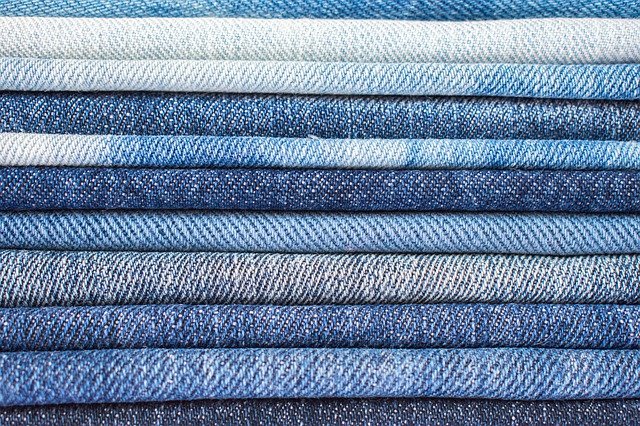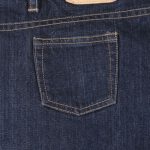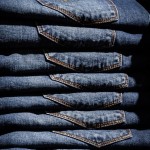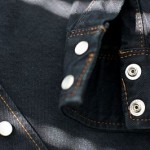Denim and cotton are two of the most common fabrics used in the construction of new clothes. Whether you’re buying a shirt, trousers or even a suit, you can probably find it in these two fabrics. There are other fabrics used in the construction of new clothes, but few are as common as denim and cotton. With that said, denim and cotton aren’t necessarily the same. By understanding the differences between these two fabrics, you can determine which one is right for your fashion needs.
What Is Cotton?
Cotton is a soft and fluffy fabric consisting of the fibrous material of the cotton plant. Statistics show that roughly 2.5% of the world’s arable land — land that’s dedicated to growing and harvesting crops — is used for cotton. In any given year, about 25 million tons of cotton are harvested from this arable land.
Cotton is simply the fibrous material that’s found around the seeds of the cotton plant. After harvesting cotton plants, farmers will typically separate the cotton from the seeds. The former is then packaged and sold as cotton. Cotton is used in countless products, though its primary use involves clothes. From t-shirts and dress shirts to suits, trousers and sweatpants, many different types of clothes are made of cotton.
What Is Denim?
Denim is a type of strong and durable fabric that consists of cotton with a twill weave. When many people hear the word “denim” they assume it’s a particular type of fabric that’s derived from a different plant other than cotton. The truth is that denim is still made of cotton. Denim differs from cotton, however, by its weave type.
Denim features a twill weave. This weaving pattern involves passing the weft under two or more warp threads. With a twill weave, denim has diagonal ribbing. Cotton doesn’t have a twill weave, nor does it have the diagonal ribbing of its denim counterpart.
A twill weave is essentially what distinguishes denim from cotton. The twill weave creates diagonal ribbing on denim that you see and feel. Denim is still made of cotton; it just features a twill weave.
You can find a variety of clothes made of denim, some of which include the following:
- Jeans
- Shorts
- Jackets
- Skirts
- Dresses
- Suspenders
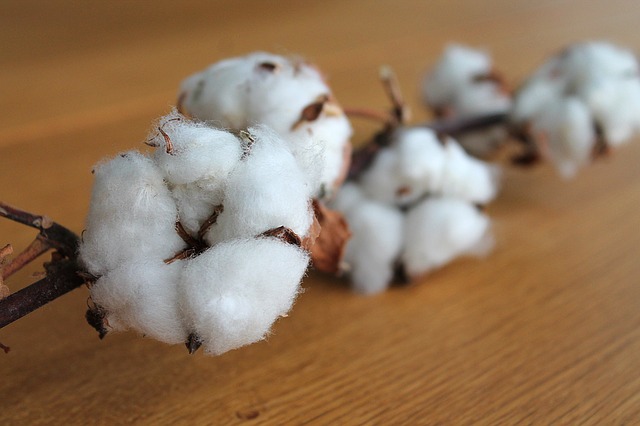
Benefits of Cotton Clothes
Cotton clothes are naturally soft. Cotton, in fact, is considered one of the softest fabrics on the planet. The soft properties of cotton is one of the reasons why it’s become such a popular fabric for new clothes. You can wear cotton clothes all day long thanks to their soft properties.
Another benefit of cotton clothes is protection from skin allergies. You can wear cotton clothes without fear or breaking out in hives or rashes. Cotton is a hypoallergic fabric that, like other hypoallergic fabrics, has a low risk of triggering allergic reactions. Other types of fabrics, particularly synthetic fabrics, are more likely to trigger allergic reactions when directly exposed to your skin.
Cotton clothes are low maintenance. They still require some maintenance, but you’ll have to invest as much time or energy maintaining cotton clothes than other types of clothes. As an organic fabric, cotton is machine-washable. When your cotton clothes get dirty, you can clean them in the washing machine. And you can also dry your cotton clothes using a conventional clothes dryer.
Line-drying is still an option. Cotton clothes can be dried by hanging them on a line under the sun. Machine-drying is simply an easier and more convenient way to dry them. Regardless, cotton clothes support both machine-drying and line-drying.
Benefits of Denim Clothes
There are still reasons to consider wearing denim clothes. Denim clothes offer many of the same benefits as cotton clothes. After all, denim is constructed of cotton. Denim just has a twill weave, whereas cotton does not.
Denim clothes are soft — just like cotton clothes. However, denim clothes are stronger and more durable because of their twill weave. When made of denim, clothes are less likely to sustain damage. You can wear denim clothes all day long while performing physical activities, and they shouldn’t rip or otherwise sustain damage.
Another benefit of denim clothes is that they are available in a different types. There’s standard denim, and there’s stretch denim. Standard denim is the most common. It consists of cotton with a twill weave. Stretch denim is an alternative type of denim. It’s still made of cotton with a twill weave, but it features a small amount of an elastic fabric as well.
Like cotton clothes, denim clothes are low maintenance. You can clean them in the washing machine, and you can dry them by machine-drying or line-drying. The steps to maintaining denim clothes are typically the same as cotton clothes because they are both constructed of cotton. Denim simply has a twill weave, whereas cotton does not.
Stretch denim is typically used in the construction of stretch jeans. Stretch denim contains an elastic fabric, such as lycra or polyester, which makes the jeans more elastic. There’s no such thing as stretch cotton. For elastic clothes like stretch jeans, you’ll have to go with stretch denim.
Denim clothes are stylish. Most of them feature a traditional blue color that’s become synonymous with jeans. Blue-colored jeans have changed very little since their origins over a century ago. You can still find jeans in this same color and same style. But there are other colors and styles in which jeans are made as well.
Choosing Between Cotton and Denim
You might be wondering whether to choose cotton or denim clothes. There are nuances between these two fabrics. Cotton is the fluffy fiber that comes from the cotton plant. Denim is a fabric consisting of cotton with a twill weave. When choosing between cotton and denim, you should consider your personal preferences as well as the type of garment.

